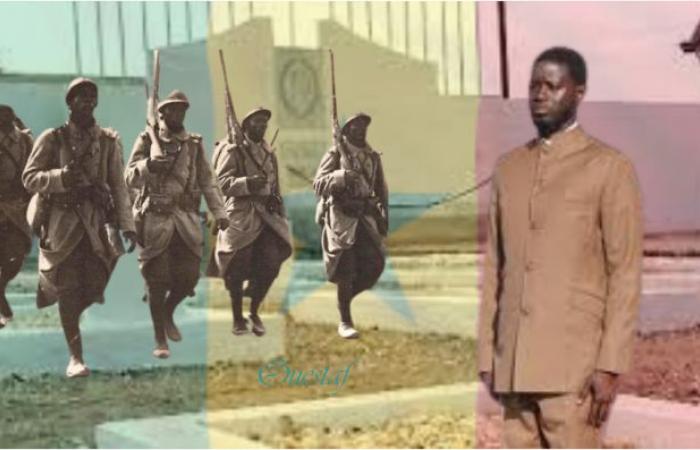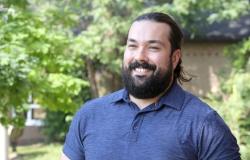The Senegalese State will set up an Ad Hoc Committee, responsible for preparations for the commemoration of the 80the anniversary of the Massacre of “Senegalese Riflemen”the 1is December 1944, at the Thiaroye camp. The announcement made in the Council of Ministers on Wednesday, June 26, 2024, by the Prime Minister, Ousmane Sonko, follows the decision of the President of the Republic to prepare this ceremony to remember this tragic event and dark page in the history of Senegal and the former French colonies in Africa. The report of this committee will be submitted to the high attention of the President of the Republic, Bassirou Diomaye Diakhar Faye, next September. This initiative of the President of the Republic, which immediately obeys a duty of remembrance, is undoubtedly a new step in the search for truth and recognition undertaken so far.
The Senegalese head of state is thus following in the footsteps of President Abdoulaye Wade, who was the first high authority to raise the issue of “Senegalese Riflemen” one of the points of his domestic policy and his relations with France. Better still, he instituted, in August 2004, the holding of the first “Senegalese Rifleman” Day. In addition to the rehabilitation of the cemetery “Snipers” and the erection of a “Place of the Tirailleur” at the roundabout of the Autonomous Port of Dakar (PAD), with the symbolic monument “Demba and Dupont”.
An Ad Hoc Committee responsible for organizing the commemoration of the 80e anniversary of the massacre of “Senegalese and African Riflemen”the 1is December 1944, at the Thiaroye Camp, will be set up in the coming weeks. The announcement was made by Prime Minister Ousmane Sonko at the Council of Ministers on Wednesday, June 26, 2024. The committee will be responsible for reporting on this tragic event in the history of Senegal, France and its former colonies in Africa.
This initiative by the President of the Republic, Bassirou Diomaye Diakhar Faye, constitutes a further step in the search for the truth about this dark chapter of history. Indeed, documentary and cinematographic accounts, testimonies and various research on this tragedy have not always dispelled the gray areas on the origin of this unspeakable massacre of repatriated former prisoners of war. There is still no official recognition of the massacre that many historians describe as “premeditated” and concealed for more than seventy (70) years. The memory of the Thiaroye massacre has never disappeared in West Africa, particularly in Senegal, the scene of the tragedy.
DIOMAYE FAYE IN THE FOOTSTEPS OF PRESIDENT WADE
With this project, the new president of Senegal, Bassirou Diomaye Diakhar Faye, is following in the footsteps set by his two predecessors at the head of the country. After his election in 2000, the former president of the Republic, Me Abdoulaye Wade, had in fact made the issue of “Senegalese Riflemen” one of the points of its domestic policy and its relations with France. The history of the Senegalese riflemen was included in the official national narrative. President Wade had announced, in August 2004, the holding of the first Senegalese Rifleman Day. While until the early 2000s, the events that took place at the Thiaroye camp on December 1, 1944, remained virtually unknown in France. At the time when the massacre took place, almost no information had filtered through to France, says historian Croset.
At the official ceremony on August 23, 2004 (the anniversary of the liberation of the French city of Toulon by the “Senegalese Riflemen” who had landed in Provence on August 15, 1944), a representative of the French government, André Wiltzer, former Minister Delegate for Cooperation and Francophonie under the presidency of Jacques Chirac, decided to address the issue. He would mention Thiaroye, speaking of“a tragic and shocking event which arouses indignation, incomprehension and sadness for those who were its victims and for their loved ones.” This is the first time, recalls Françoise Croset, that a French official has deviated from the official version, declaring that it is necessary “to repair the injustice and violence committed in Thiaroye; it is first of all to say it, not to forget the men who lost their lives, on 1is December 1944, pay tribute to them.”
A few days later, the Thiaroye cemetery, rehabilitated for history, was declared “National Cemetery”by a presidential decree promulgated by President Wade: “Article 1 – The Thiaroye Cemetery, where the Senegalese Riflemen who died during the colonial repression of December 1, 1944, are buried, is declared a National Cemetery. On August 23 following his election, the President of the Republic pays his respects to the victims. On August 23 of each year, the Prime Minister lays a wreath there.”
While the Thiaroye affair has begun to emerge from total oblivion and to have a public place in the country, the works of historians already published have not succeeded in harmonizing positions and contesting the official version. Within the French state, the desire to shed light on the Thiaroye massacre still encounters real resistance. What is certain is that the official position of the French state will experience a certain weakening.
BENDING OF THE FRENCH STATE
During his first official trip to Africa, on November 30, 2014, the President of the French Republic, François Hollande, who had promised to return the archives to Senegal, gave a speech at the Thiaroye cemetery. He again used the expression “bloody repression”speaks of“simply terrible, unbearable events” and D’“terrible tragedy.” He declared that there had been no rebellion and that the shots fired at the riflemen were not retaliatory shots. He acknowledged that the exact number of victims of the shots remained unknown, as did the exact location of the graves of the riflemen killed. His speech was hailed as an important gesture. Was it a question of finally getting rid of a difficult issue, of declaring that France had come to terms, had “honored his debt”as the French president said in his speech, that it has turned a dark page in its history.
These statements did not prevent a little earlier, in November 2014, from being held in Senegal a Historians’ Colloquium, organized at the initiative of the French Embassy in Dakar, a colloquium on the history of African troops in the two world wars, and which totally ignored the massacre of “Thiaroye 44”. Indeed, within the French state, the desire to shed light on the Thiaroye massacre is still encountering real resistance. If the official position of the French state is changing, it is because, as historian Françoise Croset points out, in France itself, the Thiaroye affair is beginning to emerge from total oblivion. The events of Thiaroye are beginning to have a public place in France. The report on the commemoration of the 80e Thiaroye’s anniversary, commissioned by the Senegalese head of state, Bassirou Diomaye Diakhar Faye, comes at the right time and will allow significant progress in the search for truth and recognition.
OMAR DIAW






